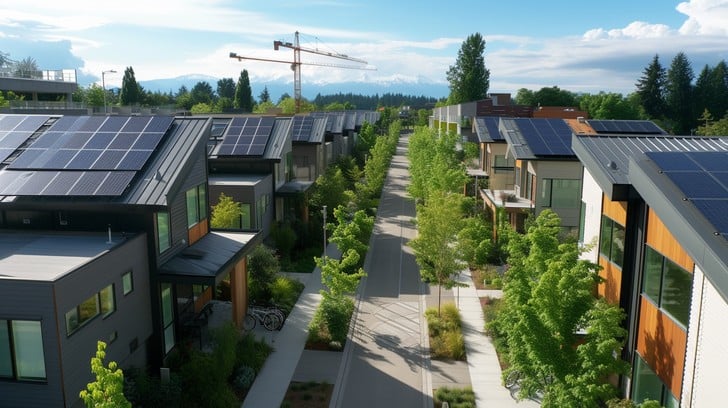
Urban Farming for Sustainability: A Path to Greener Cities
The concept of urban farming for sustainability is gaining momentum as cities strive to become greener and more self-sufficient. With the increasing challenges of climate change and urbanization, adopting sustainable practices such as urban farming can significantly contribute to a healthier environment and more resilient food systems. As city dwellers, embracing urban farming not only improves our quality of life but also promotes ecological balance.

Understanding Urban Farming
Urban farming involves cultivating, processing, and distributing food in or around urban areas. It encompasses a variety of practices including vegetable farming, aquaponics, beekeeping, and even raising chickens. These activities can take place in backyards, on rooftops, or in community gardens. The primary goal is to enhance food security and sustainability within cities.
Benefits of Urban Farming
Urban farming offers numerous benefits, both for individuals and communities. Firstly, it reduces the carbon footprint associated with transporting food from rural areas to urban centers. By growing food locally, we can cut down on food miles, leading to lower greenhouse gas emissions.
Moreover, urban farming contributes to food security. It ensures a steady supply of fresh produce, which is particularly crucial in food deserts where access to healthy food is limited. Additionally, engaging in urban agriculture can foster community spirit as neighbors come together to cultivate and share their harvest.
Improving Air Quality
Plants are natural air purifiers. By increasing greenery in urban areas, we can improve air quality, which has direct health benefits for city residents. Urban farms can absorb pollutants and provide oxygen, making cities more livable and reducing the prevalence of respiratory ailments.
Enhancing Urban Biodiversity
Urban farming also supports biodiversity. By introducing a variety of plants and flowers, we create habitats for pollinators like bees and butterflies, which are essential for a healthy ecosystem. This biodiversity contributes to a more balanced urban environment.
Challenges of Urban Farming
While urban farming presents many advantages, it also faces challenges. Space is a significant constraint in densely populated cities. However, innovative solutions like vertical gardens and rooftop farms are addressing these limitations. For more on this, check out how vertical gardens are transforming urban spaces.
Another challenge is the initial cost of setting up an urban farm. Despite the expenses, the long-term benefits often outweigh these initial investments. Finding local resources or community programs can help mitigate these costs.
Soil and Water Contamination
Urban areas can have soil and water contamination issues. It’s crucial to test and remediate soil before planting to ensure food safety. Using raised beds or containers can be a practical solution to avoid soil contamination.
Implementing Urban Farming Initiatives
To effectively implement urban farming, cities need supportive policies and community involvement. City planners and government agencies can promote urban agriculture through zoning laws and incentives. Community workshops and educational programs can empower residents to start their own urban farms.
Community Gardens
Community gardens serve as a hub for urban farming. They provide shared space where individuals can grow food collaboratively. Community gardens are not only about food production but also about building social connections and fostering a sense of community ownership.
For more insights into the role of community gardens, you might find this study on sustainable urban housing solutions interesting.
Rooftop Gardens
Rooftop gardens are an innovative way to utilize underused spaces in urban environments. They provide insulation for buildings, reduce heat absorption, and create additional green spaces. Rooftop gardens can be particularly effective in cities with limited ground space.
Hydroponics and Aquaponics
Hydroponics and aquaponics are soil-less farming methods that are ideal for urban settings. These systems use nutrient-rich water to grow plants, making them highly efficient and suitable for urban areas with limited space.
Conclusion: The Future of Urban Farming
The future of urban farming for sustainability looks promising. As more cities recognize the benefits of integrating agriculture into urban planning, we can expect an increase in urban farming initiatives. These efforts will not only make cities more sustainable but also improve the quality of life for their residents. By embracing urban farming, we can create greener, more resilient cities for future generations.

FAQs
What is urban farming?
Urban farming involves growing food within city limits, using methods like community gardens, rooftop gardens, and hydroponics to promote sustainability and food security.
Why is urban farming important?
Urban farming is crucial for reducing the carbon footprint of food transportation, improving food security, enhancing air quality, and supporting urban biodiversity.
How can I start urban farming?
Starting urban farming can be as simple as growing herbs in pots or joining a community garden. Consider your available space and resources, and seek out local workshops or online resources for guidance.
For more information on sustainable practices, you can explore topics like water management or the waste management in urban settings.
This article contains affiliate links. We may earn a commission at no extra cost to you.